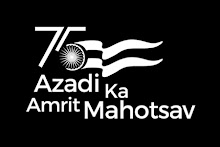Mangalyaan, India’s Mars Orbiter Mission had a picture book launch from the Sriharikota space port on Tuesday at 2.38 pm, giving India an opportunity to become the first Asian nation to reach the Red Planet.
As the satellite streaked across the overcast skies, India’s top space scientists broke out in applause and sighed in relief. Isro joined Nasa, the European Space Agency (ESA) and Roscosmos of Russia in successful launch of probes to the Red Planet. The polar rocket that launched the MOM, however, is much smaller than US, European or Russian equivalents, which can blast directly out of Earth’s gravitational pull.
Tension in the Mission Control Centre at Satish Dhawan Space Centre was palpable as space scientists watched the trajectory of the rocket during the crucial coasting phase lasting 20 minutes in the second-last phase of the flight. They were relieved when the last stage came alive minutes before hurling the Orbiter at a height of 383 km and a speed of 9.8 km per second.
Soon after its launch, the solar panels on board the orbiter were switched on. Isro’s anxiety was also centred on the two ships Nalanda and Yamuna arriving at the designated spot in the South Pacific ocean at the right moment to track the Orbiter over the Pacific ocean and provide real time data. Much to the relief of the scientists, it reached late last night.
Apart from the loud cheers, the self-effacing scientists merely shook hands and flashed the thumbs-up sign. They did not uncork the bubbly to mark the foray into cutting edge science. Not there was any sign of a celebratory dinner.
“We will probably meet to review the flight in the evening and will be back at work tomorrow morning. We have not thought of getting together for a celebration,” S Rama-krishnan, director, Vikram Sarabhai Space Centre, said.
Dr SK Shivakumar, director, Isro’s Satellite Centre (ISAC), Bengaluru, concurred with his colleague while Isro’s Chairman Dr K Radhakrishnan said the successful launch of the Orbiter was a “fitting tribute” to the founding fathers of the Indian space programme in its 50th year.
Former chairman of Isro Dr Krishnaswami Kasturirangan, who witnessed the launch, described the Orbiter mission as a “baby step for the good of humankind”.
He told this newspaper: “Earthlings must understand Mars, as it is conducive for settlement. We must be part of the pioneering group that explores Mars and be part of the initial human settlement and later a larger settlement. With our vast scientific and technological knowledge we must constantly upgrade our capability and carry out cutting edge science. The Mars Orbiter is one example of pushing the envelope to traverse through deep space.”
Speaking to the media later, Dr Radhakrishnan said his colleagues had employed a “new and complex” design to ensure that the Orbiter moves from earth to Mars without spending much energy.
Ruling out entering into a race with China in exploration of outer space, he said: “We are not in a race with anybody but with ourselves, and that is to excel in all our missions.”
Speaking in defence of the budget of Rs 450 crore, he said “the Mars mission drives science and technology and if it does not, there will be stagnation.” The space programme was intended to catalyse development and support disaster management. In fact during the recent cyclone, three satellites had tracked the movement of the cyclone and helped authorities concerned with advanced warning, he added.
He said the next crucial step for the Mars Orbiter would be on December 1 when the probe would be fired to spin out of the earth’s orbit and commence the nine-month journey to Mars. It would reach the Red Planet in September 2014, he added.
With the successful launch of the PSLV, Tuesday’s flight became Isro’s 25th successful mission on the trot.






No comments:
Post a Comment